Whenever I’m in a new food joint or restaurant, I look for two things in the menu – tokwa’t baboy or fish fillet. They are very simple dishes but if they are exceptional, I know the owners focused on creating each dish and that the rest of the menu will be great.
Such is the mindset I had when I tried the base model Ford Everest. It’s the most affordable and relatively simplest in terms of features. If it’s good, then it can only get better with the higher variants. Was it up to par with the others in its segment? Read on to find out.
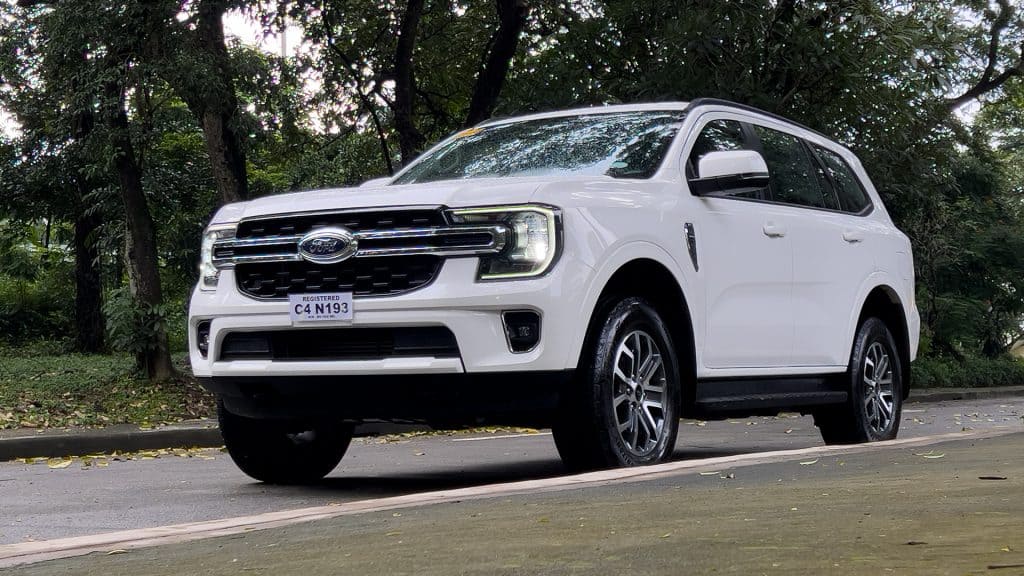
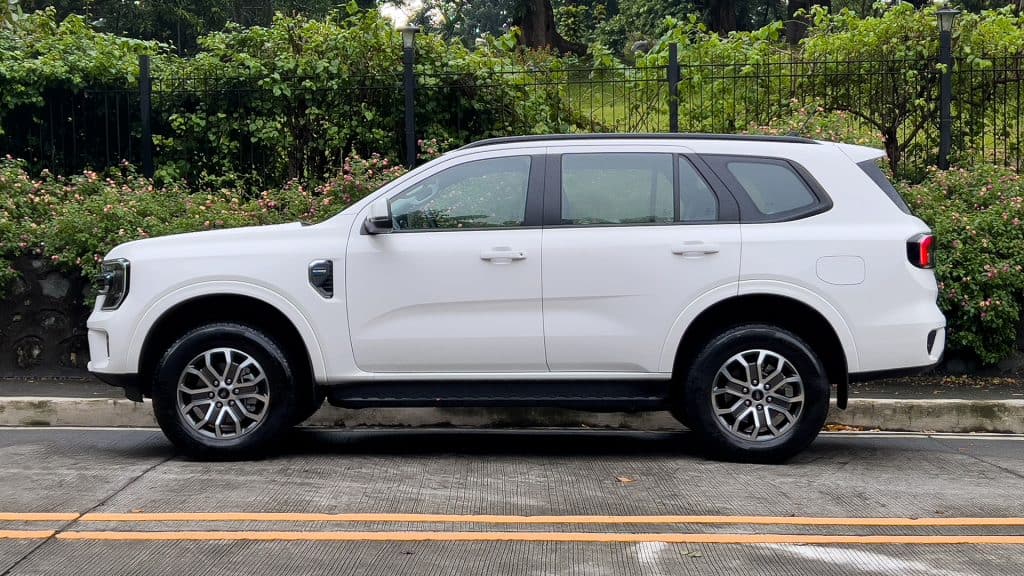
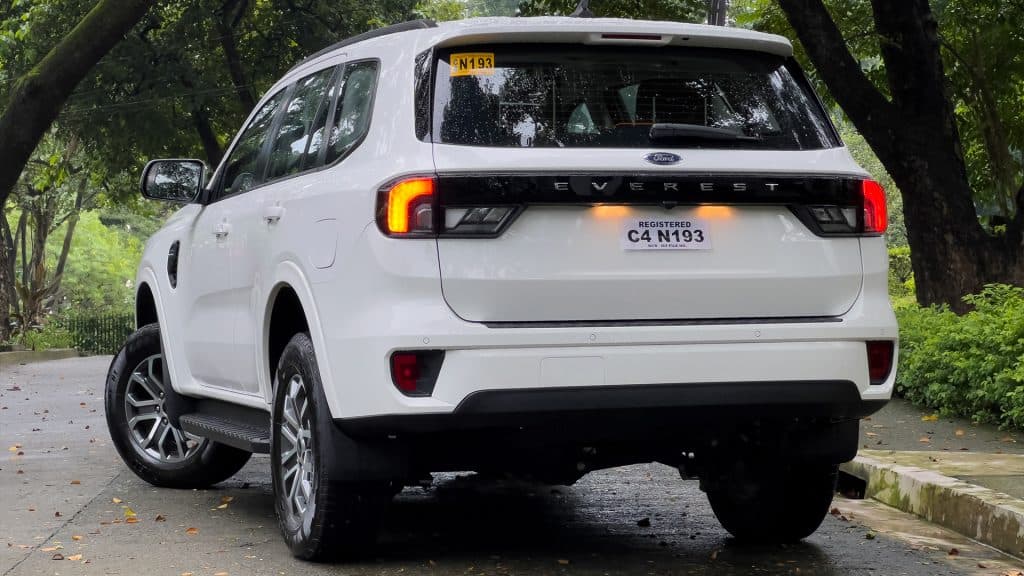
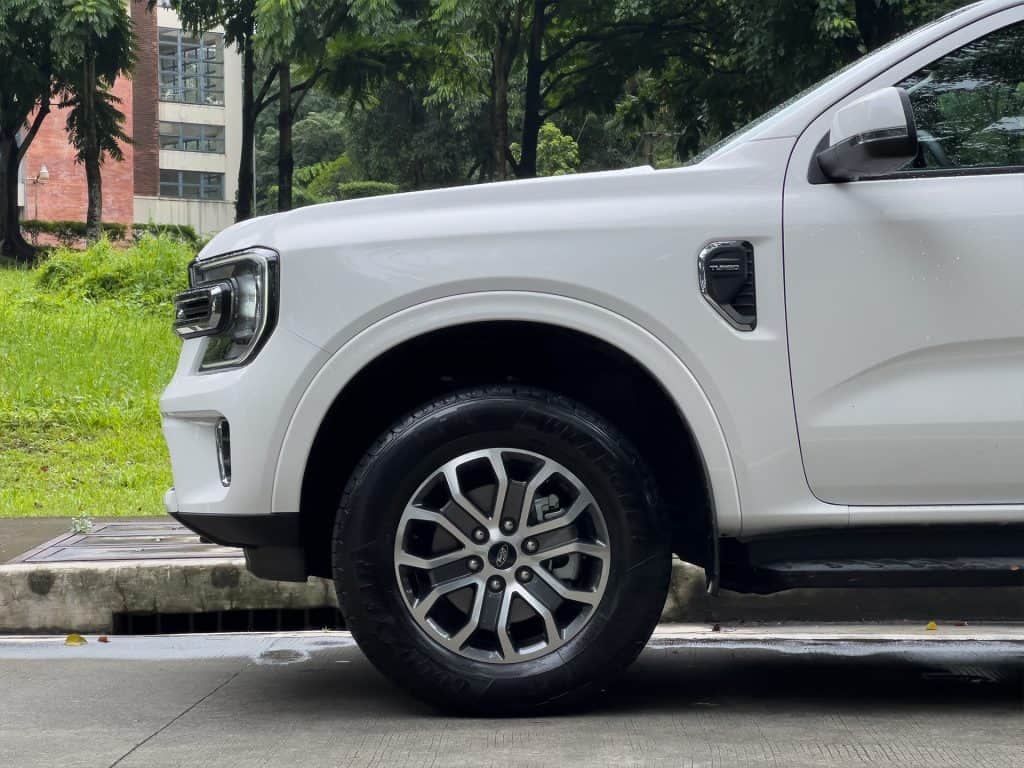
It doesn’t matter what your preference is in an SUV, the Ford Everest will catch your attention. The front end looks much more intimidating than anything in the market right now. This might be the base model Trend but it has the same LED lighting as the higher variants sans the ‘Matrix Lighting’ found in the Titanium+ 4×4. The wheels add more style points with its dark finish and despite being smaller in its lineup, the 18-inch size looks perfect for the Everest.
Go to the rear and you’ll see the great contrast of the bright taillights, dark housing on the tailgate, and the nameplate at the center. The sculpting here is rather simple to give more focus on the dark cluster that occupies the middle.
The Everest never had issues with clutter but Ford decided to go one step further with simplicity on the dashboard. There are smaller buttons and knobs for the air control, less buttons on the center console, and a huge 10-inch portrait touchscreen at the center of the dash which now houses many of the vehicle’s controls. I still prefer such functions out and placed on the dashboard but I guess there’s no escaping this trend, no pun intended. Luckily the air controls still have a physical knob.
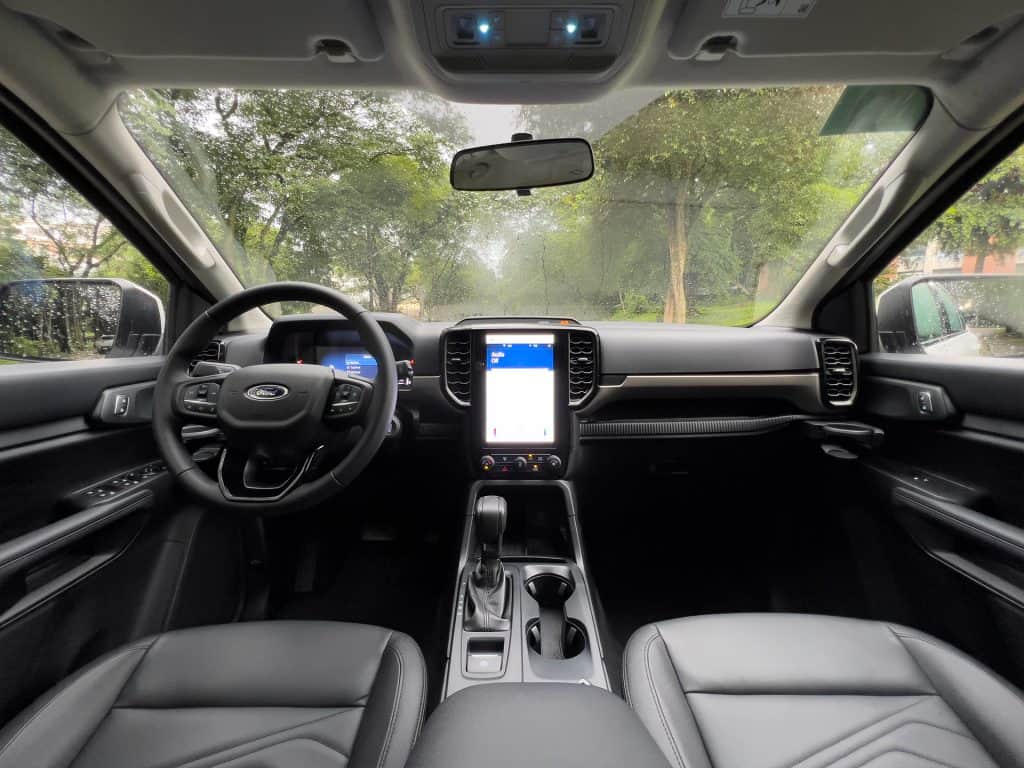
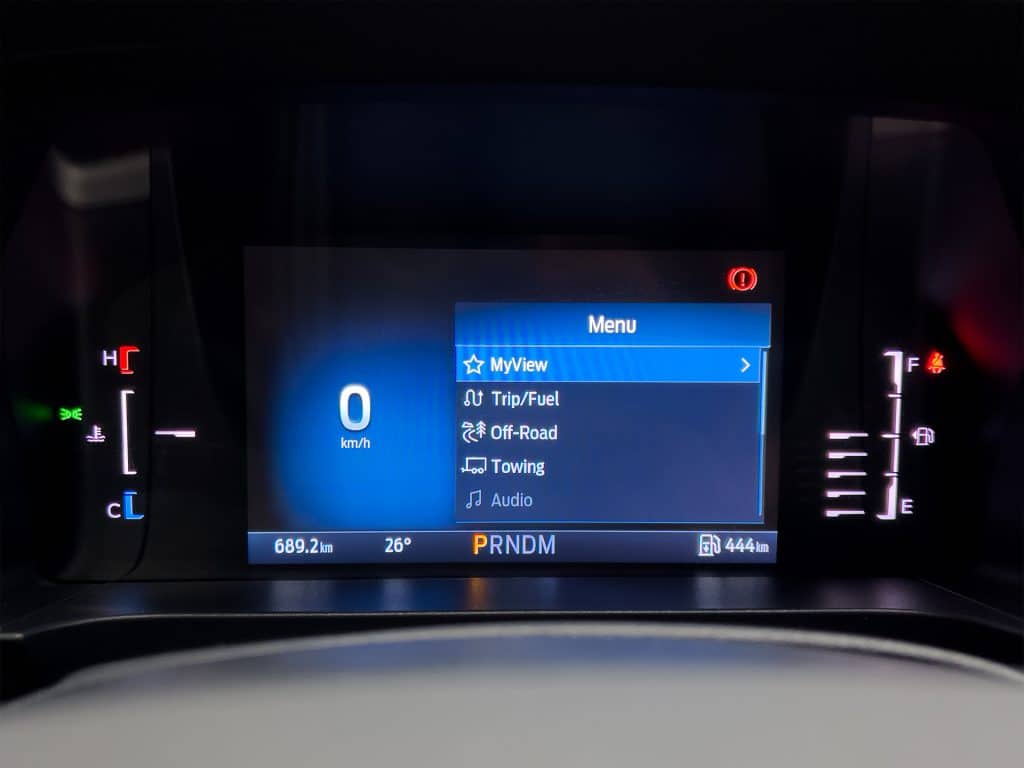
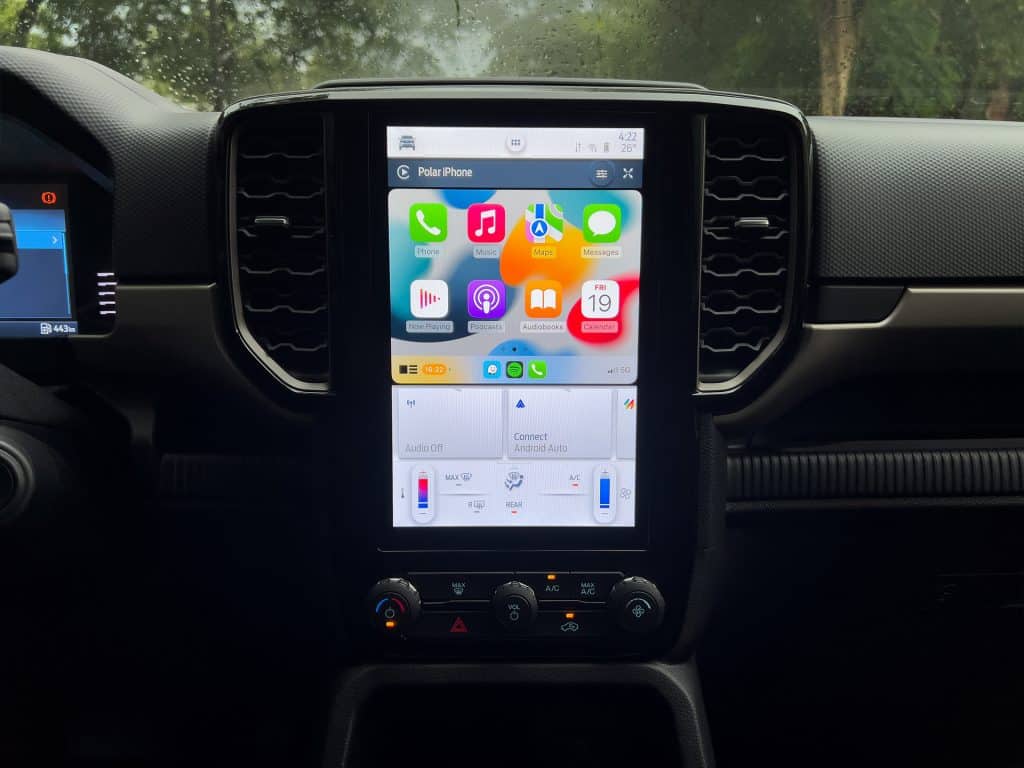
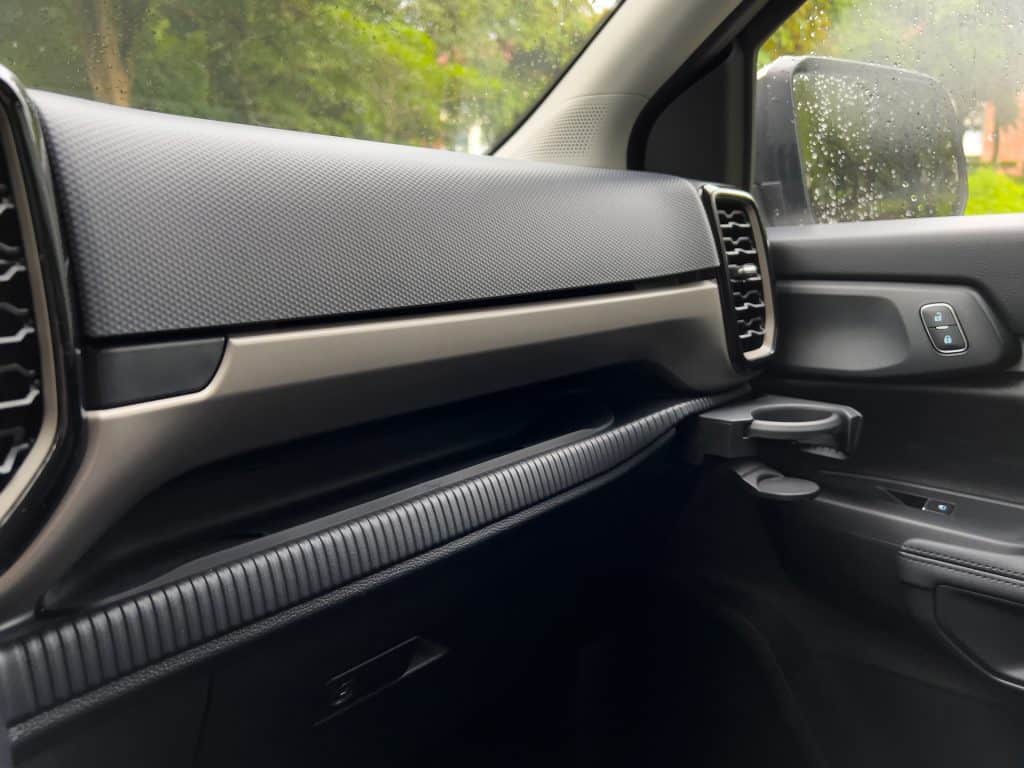
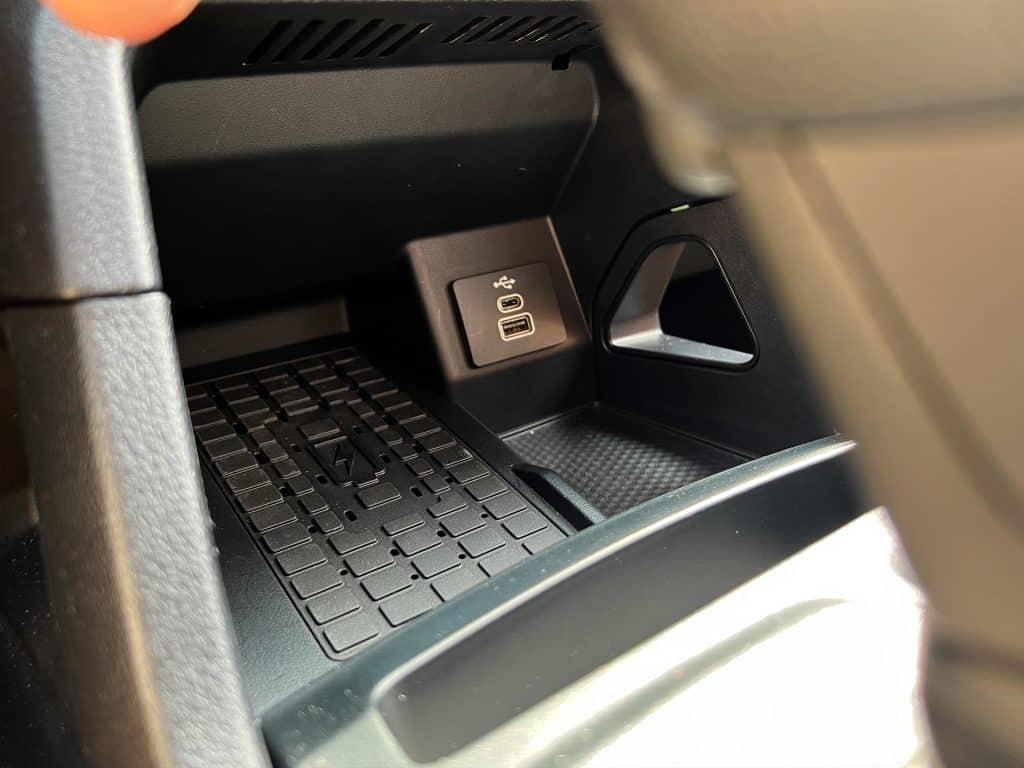
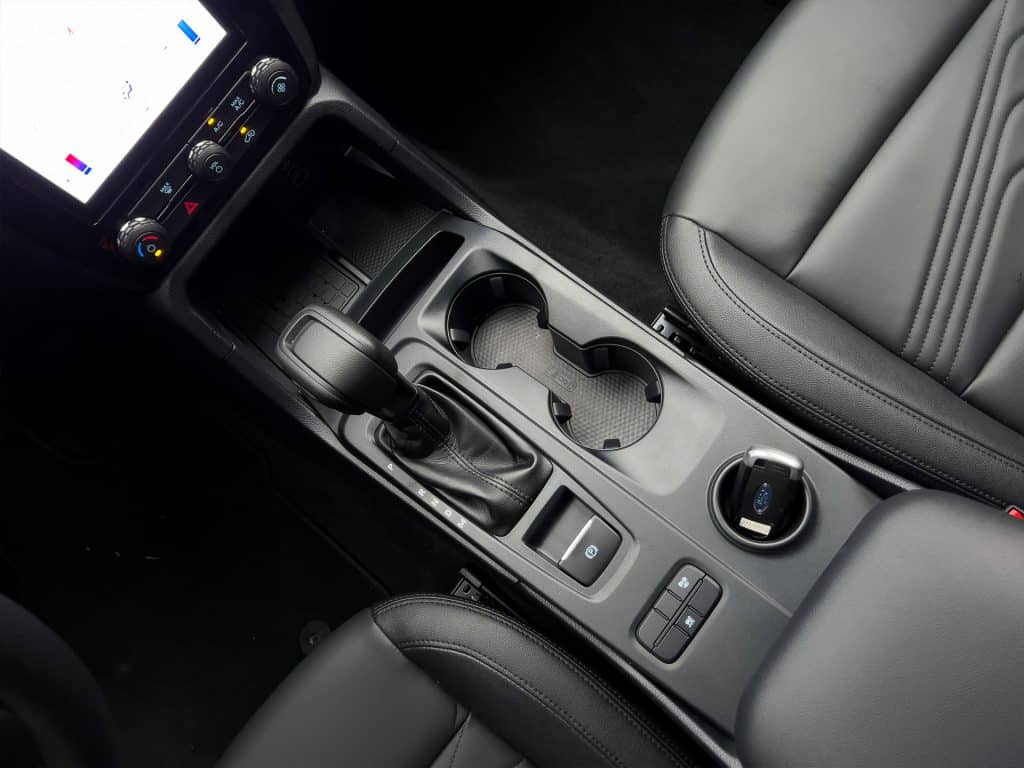
The Everest Trend put its rivals in the segment to shame in terms of cabin amenities. The high resolution touchscreen has wireless Apple CarPlay, it has leather seats already, 8-way powered driver’s seat, 8-inch digital gauge cluster, a USB-C port for faster charging, and even a wireless charger. I also love the hidden cup holders by the corners of the dash. Just a reminder, we’re talking about a base model Ford Everest here. They definitely made sure this will be ahead of the pack.
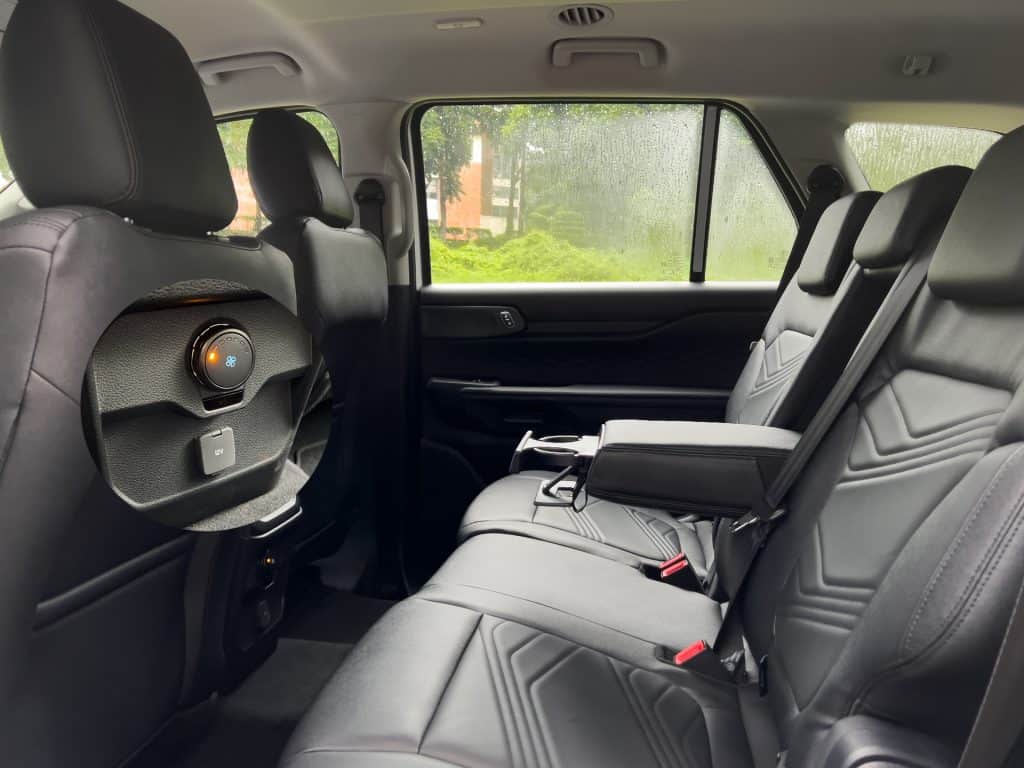
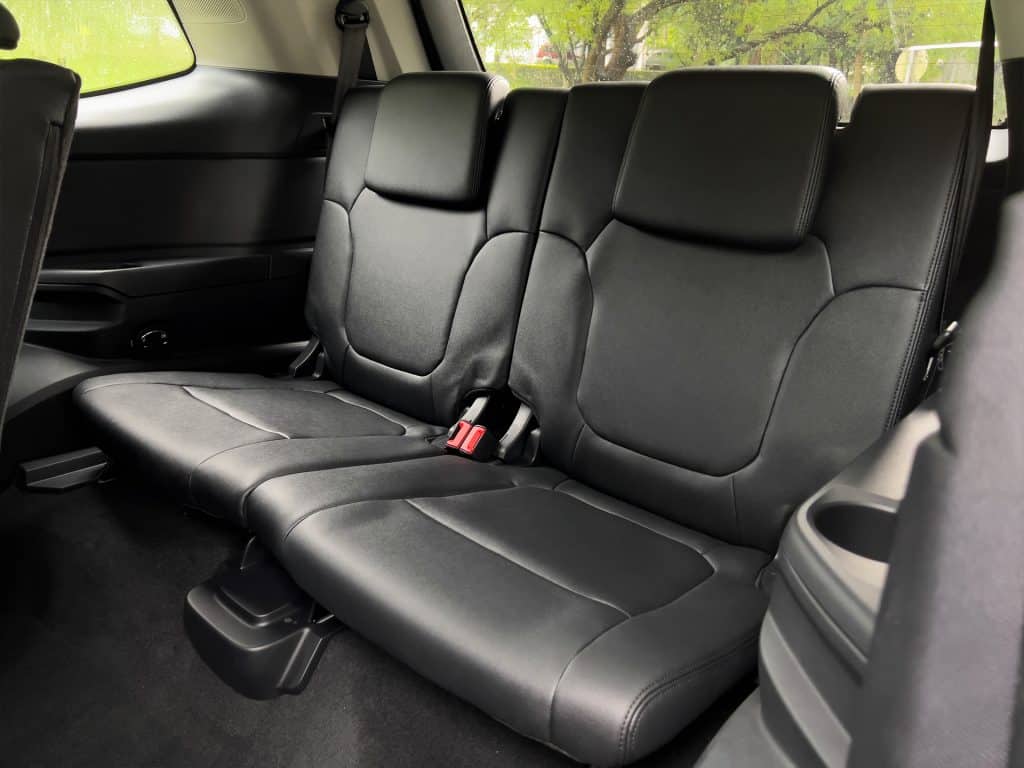
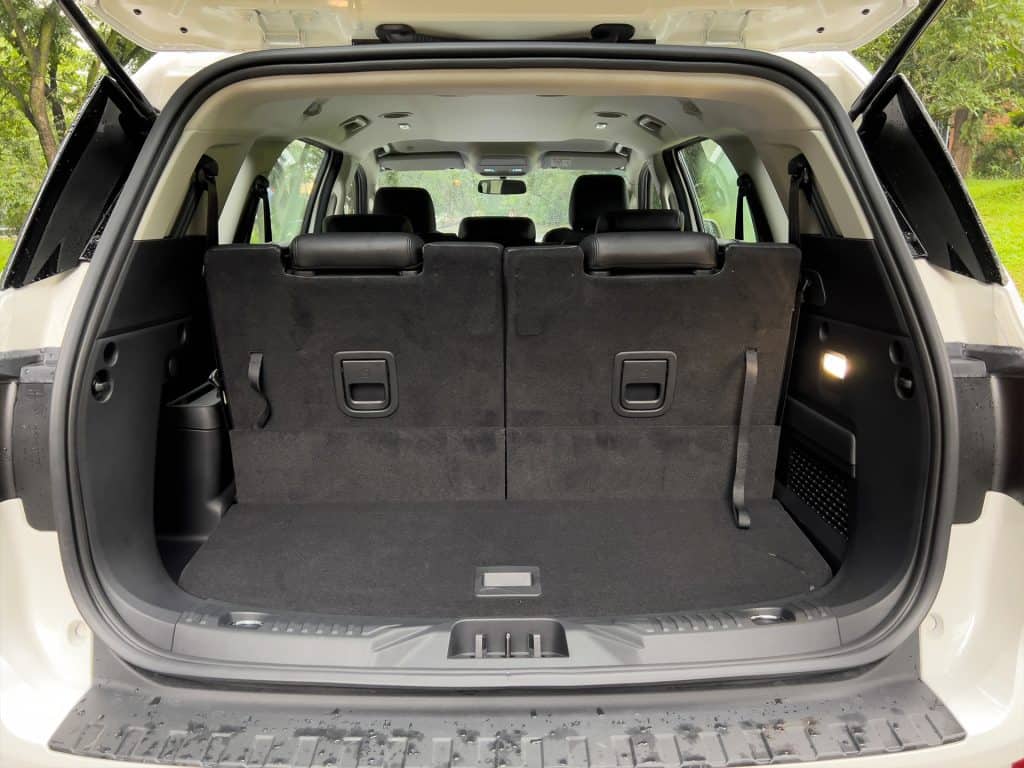
In terms of room, there’s plenty of it for everyone. The third row is notable because it’s a snug fit for 5’6 me with the second row seats at its rearmost. Sitting position is also surprising since it’s very comfortable to sit on despite having the ability to be flat for more cargo space.
Apart from the looks and toys, what I really looked forward to testing was the driving dynamics of this new Everest. I’m not a fan of the previous model because its front end has a tendency to ‘dip’ in slow traffic and sudden braking even if it’s not a full press.
I’m glad to say that Ford did improve on the new Everest’s suspension. It doesn’t dive down as much anymore during normal stop and go traffic, and the ride comfort became more supple. It’s not as soft as before which is good because the previous tends to be bouncy. Add to this the nice cabin isolation and the Everest really raises the standard of what you can expect at this price point in a mid-size SUV.
Actual driving is more of a mixed bag though. The steering wheel is now weighted nicely for a more stable drive unlike before where it’s feather-like in its response. It’s a notable improvement for sure, it’s just that it wasn’t supported by what’s keeping you in place. The seats have a flat backrest especially on the shoulder areas. That goes for the first and second rows. A bit more speed than necessary on any corner and you’ll feel that the Everest has more body roll than it really has. But if you’re not attacking curves unnecessarily like me, then you’re all good.
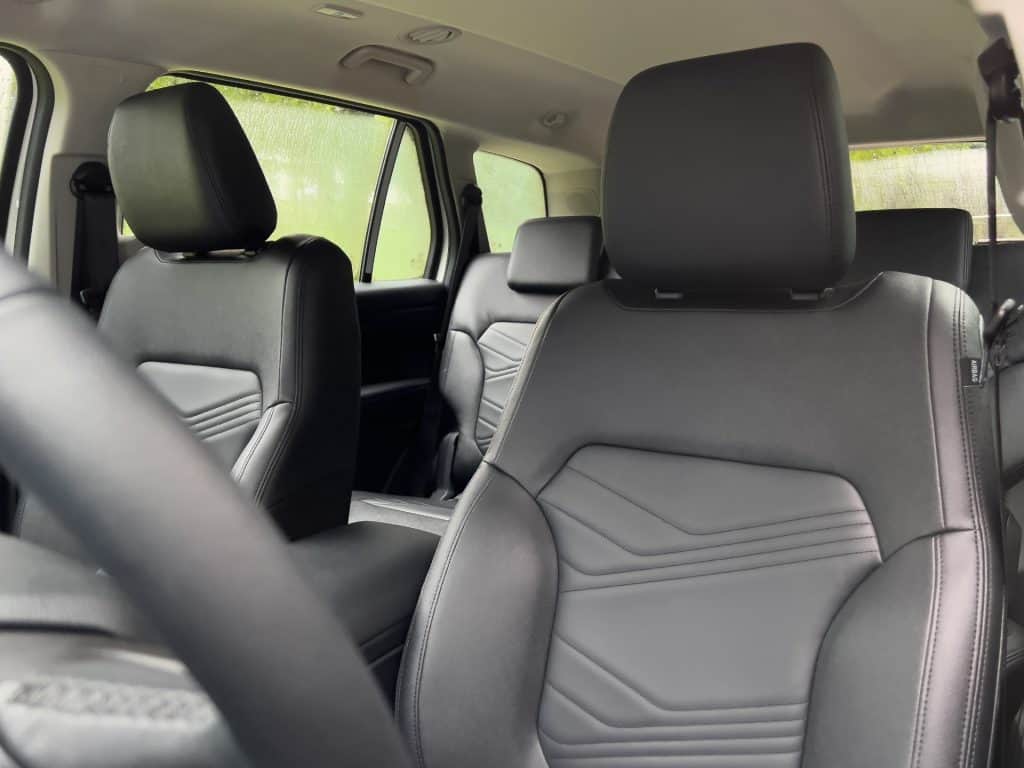
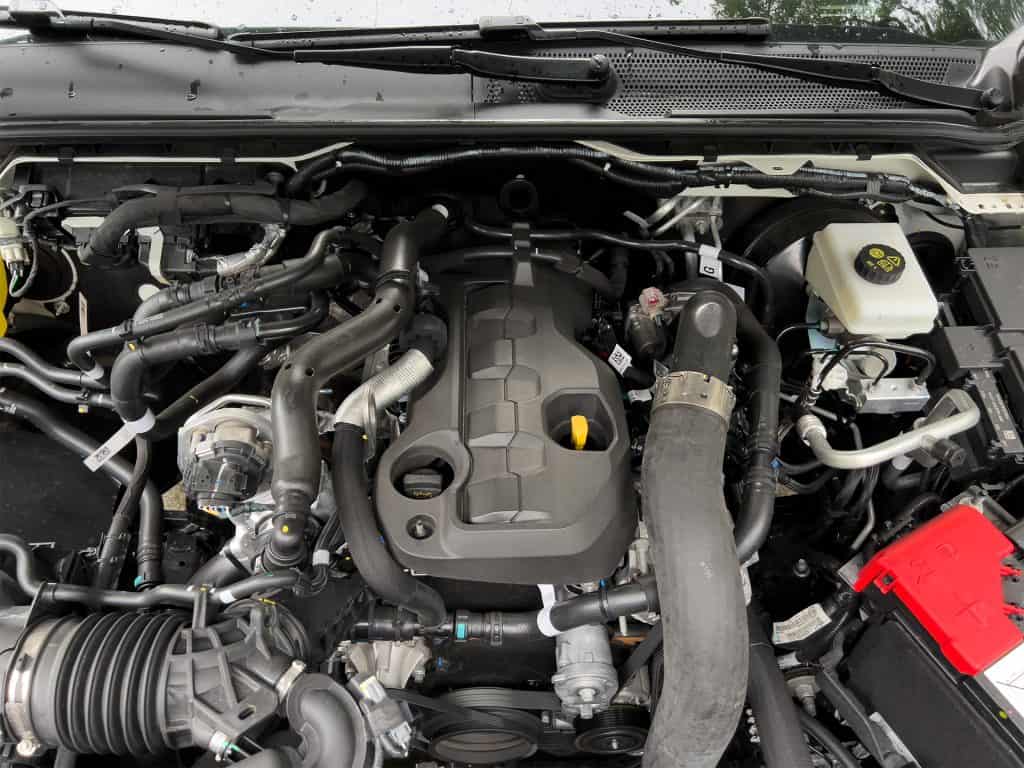
What powers the base model Everest is a 2-liter single turbo diesel engine that makes 167 Hp and 405 Nm of torque, paired to a 6-speed automatic. It’s a step down from the previous 10-speed this engine was coupled to but honestly, I find it adequate for this engine. The new transmission doesn’t have problems in most city and highway driving conditions. It can even go at 100kph without getting past 2,000rpm which makes it fuel efficient. In the city, it tallied 10.5 km/l with moderate traffic while on the highway at an average of 90 kph, it returned 18.7 km/l. That’s a great number considering most diesel SUVs and pickups max out at around 15 km/l in the same highway driving situations.
Across all variants, the new Everest gets 7 airbags as standard. This is why you can forgive it for not having the most impressive safety features. Still, it has cruise control, manual speed limiter, hill launch assist, roll over mitigation, rear parking sensors, and a rear camera. Some will be nitpicky and say ‘why doesn’t it have front sensors’ and to that I say, if you need front sensors that bad, maybe you should get a smaller car.
With the economy of the country, it’s inevitable that the new Everest now has a higher entry point at P1,799,000. That’s P37,000 and P28,000 more expensive than the base model ‘matics of the Fortuner and Montero respectively. But I doubt you’ll find that premium a hassle.
Ford has seemingly gotten a great balance with this Everest Trend. It looks badass, very comfortable to drive and ride on, is fuel efficient, and has toys you can only see in higher variants of its rivals in the segment. Many things in life are subjective but one will be lying if they say the Ford Everest Trend is not raising the standard for what you can expect in a base model.

